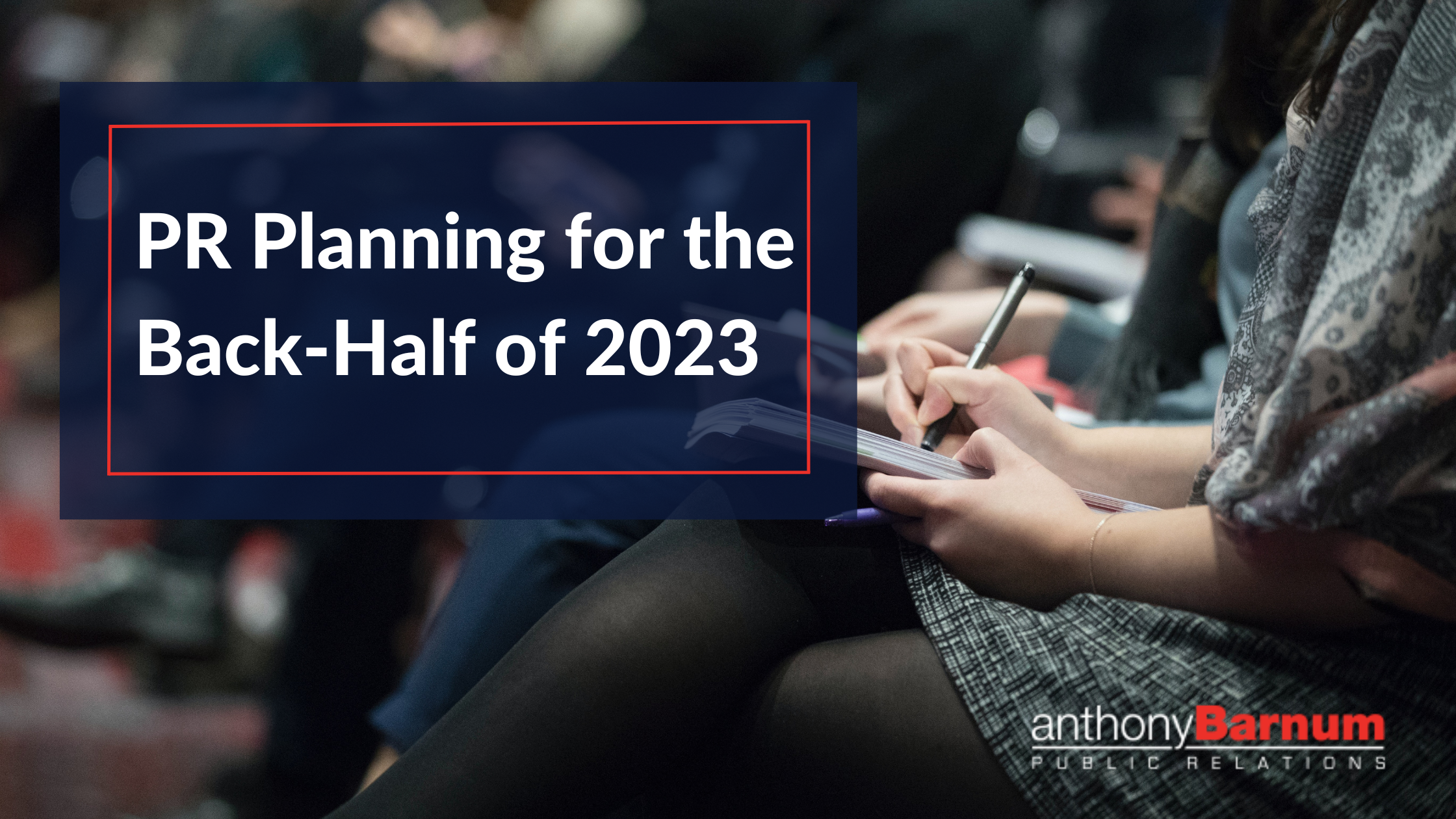
Marketers create strategies and tactics designed to deliver leads and conversions many months in advance. Sales cycles in advanced tech range dramatically from a month to 18 months. B2B tech marketers have to drive pipeline and prove out their platform’s value to their market in a never-ending set of interrelated strategies. As we enter the back-half of 2023, marketers are planning now for outcomes at the end of year.
The same approach marketers apply throughout their ecosystem of strategies, should also be applied to their public relations—timing, planning, and reverse engineering timelines to ROI are all key.
anthonyBarnum defines best practices in PR based on a body of its own proprietary case studies of tech PR outcomes. When planning for the back-half of the year, and a powerful set of PR outcomes, here’s answers to common questions, and a guide to approaching the remainder of ’23.
If a product launch is planned for October, when should I start the PR campaign?
If a product launch is planned for Q4, the time to begin thought leadership and establishing the visibility of the company is during Q3. Most companies are going to aim for an October timeframe – if possible – to launch new products versus November or December. Companies with limited to no media presence in advance of a product launch, in particular, need to establish visibility to priority audiences with months of runway.
Are November and December bad times to do PR?
November and December are not bad times to commence a campaign, when marketers are seeking earned media coverage to coalesce at the end of the year and during January. If tech marketing executives seek to commence a campaign in November for outcomes to come together in December, there isn’t enough runway given the holidays for full-scale results. However, it is necessary to start in late Q4 to get the most out of early Q1.
When should I start a campaign for a strong end of the year push?
To achieve substantial Q4 outcomes, the time is the dead heat of the summer, just as with any serious marketing initiative. Our data shows that earned media results stay steady through the summer. To be performing at scale by the holiday season, we recommend reengineering backwards to lay the foundation and optimize intensity of visibility.
What time of the year is slow for earned media? Is it August when vacations ensue or July or December?
The reality is it’s a mixed bag. While there are fewer reporters during key vacation zones, there are also fewer concepts being pitched. This can mean that there are key openings for story placement during less than perceived prime times. The two quietest times of the year in terms of securing media results are intuitive – the week of July 4th and the week of Christmas – the end of the year. However, the weeks before these holidays often require reporters to quickly move on stories to be featured while they are out. Upon return, like any professional, they are often trying to catch up. So what we generally see is that there is an accelerated need for stories before prime vacation time and immediately following – creating openings.
When is the best time to secure earned media?
Our data and case studies show January is one of the most robust times to secure earned media. Arguably, we see key inflections in the first two weeks of the new year. Reporters are seeking all the “what happened and where are we going” stories, while also trying to catch up from being out themselves.
If the last two weeks of December are the slowest, why do PR in December?
If a tech company has a year-end hook, it’s important to keep reaching out to the media up until the holidays. Also, it’s an important time to plan for concepts and strategies in the new year—to really take advantage of those first several weeks of January. By the end of January, everyone is in full swing. For advanced technology companies seeking to carve out a category, it’s a great time to out plan and out prepare competitors.





